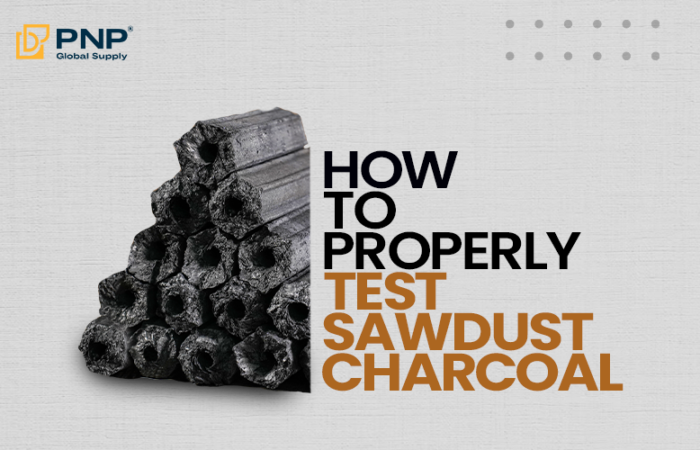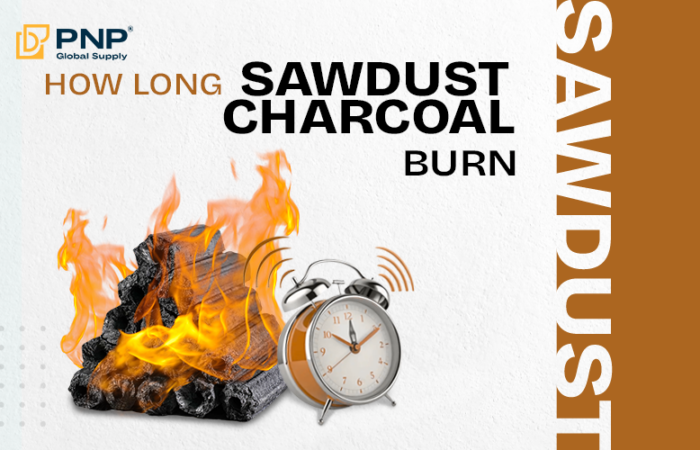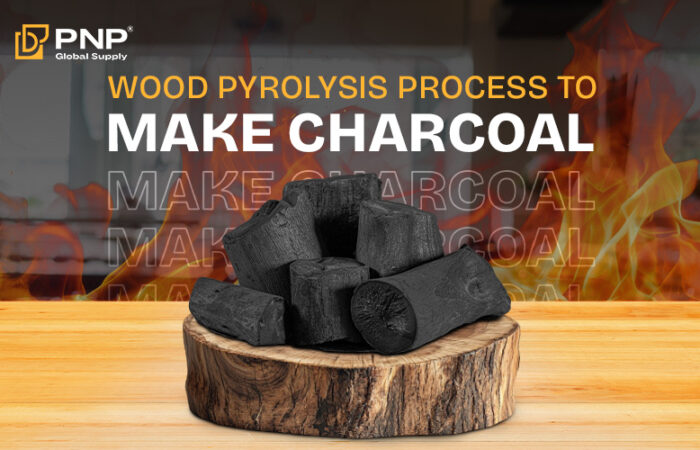The current article explores how to make charcoal briquettes from sawdust, hence transforming waste into a source of renewable energy. The procedure involves binding materials and compressing sawdust, followed by carbonizing it for endurance and prolonged heat. Discover the important steps and advantages of making sustainable briquettes at home or for businesses.

What is Charcoal?
Made by low oxygen combustion of various organic matter such as wood or sawdust, charcoal is a lightweight and blackish compact material. An important step in this carbonization process includes evacuating water content along with some other rapidly vaporizing materials which leads to most of it being left with pure carbon. As it generates high and sustainable heat, charcoal is mainly utilized as an energy source for cooking and warming purposes.
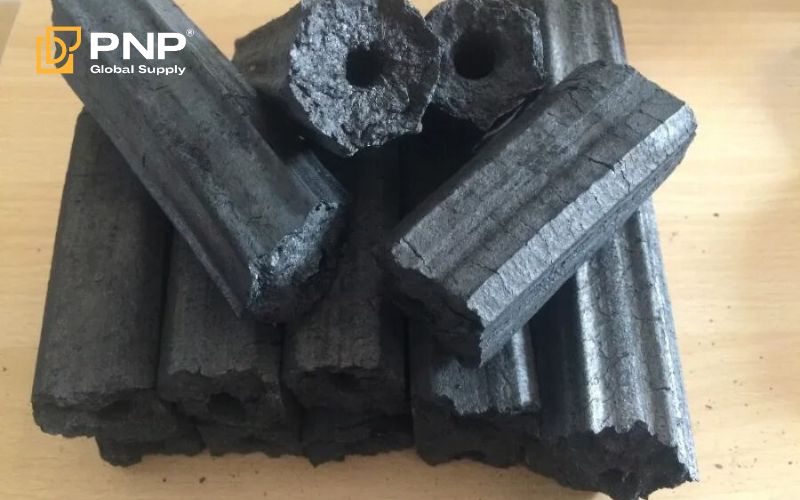
Benefits of Charcoal from Sawdust
- Eco-friendly: Utilizes wastes, lessens deforestation, and promotes sustainability.
- Cost-effective: Costs less to move as it recycles sawdust which is a consequence of processing wood.
- Efficient burning: Burns longer and produces consistent heat, making it best for cooking and heating.
- Reduced emissions: Produces much less smoke and dangerous gases in comparison to standard wooden charcoal.
- Versatile use: Can be shaped into briquettes for easier managing, storage, and transportation.
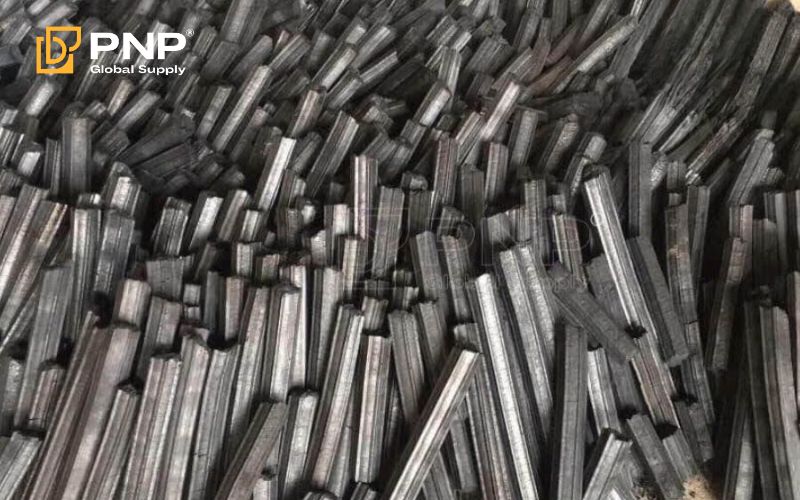
Raw Materials and Equipment
For sawdust charcoal briquettes production, there are important basic materials and specific machines required.
Sawdust
Sawdust forms the very foundation, usually obtained from timber industries. It is produced as a result of cutting, crushing or drilling wood and is the raw material that forms charcoal.

Binder
A binder is important to hold the sawdust particles together, commonly the use of substances like starch or clay. It guarantees the briquettes remain firm and durable all through burning.
Equipment
For this, there is a grinding machine, a mixture machine used to combine sawdust and binder materials, briquette presser for shaping them into briquettes. Additionally, carbonization devices are required to convert the unprocessed briquettes into charcoal.

Production Process
The process of making charcoal briquettes from sawdust consists of various steps, starting from gathering the raw materials up to their final packaging.
Step 1: Preparation of Sawdust
To initiate, collect, and dehydrate sawdust so that its moisture content can be reduced. Dry sawdust ensures better efficiency and better outcomes for the duration of briquettes.
Step 2: Mixing with Binder
Mix the dried sawdust with a suitable binder, consisting of starch or clay. The binder facilitates holding the particles together, ensuring the briquettes maintain their form.

Step 3: Briquetting
The combination is then pressed into particular shapes such as hexagon, using a briquette press device. Proper stress guarantees that the briquettes are compact and sturdy.
Step 4: Carbonization
Once formed, the briquettes go through carbonization, a way that heats them in a low-oxygen environment, changing them into charcoal.
Step 5: Cooling and Packaging
After carbonization, the cooled briquettes are sealed in packages intended for sale or utilization. Appropriate chilling guarantees that these products maintain their physical stability throughout storage and transport.
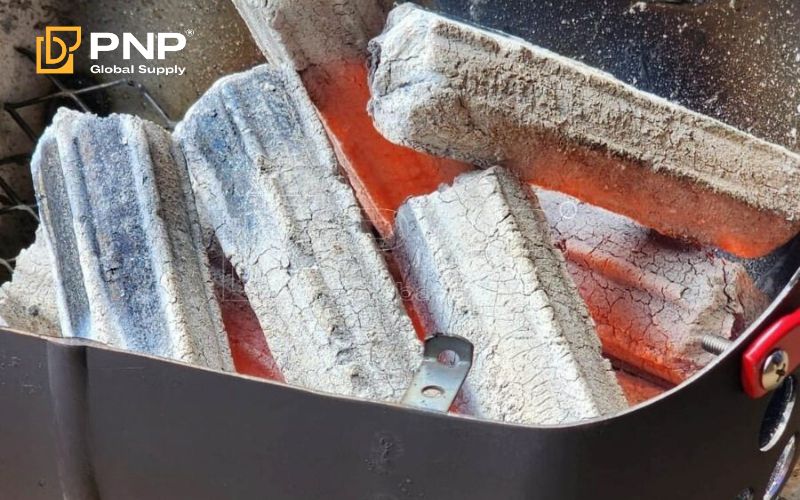
Benefits of Making Charcoal Briquettes from Sawdust
Sawdust briquettes charcoal production brand impacts various environmental, social, and economic aspects.
Environmental Benefits
Thus, through the use of sawdust, a waste byproduct, it cuts down deforestation and minimizes waste thereby promoting sustainable practices and carbon emission reductions.
Economic Benefits
It offers a fee-effective opportunity for traditional charcoal production, the usage of readily available raw materials, that would cause savings for both producers and clients. Additionally, it opens up possibilities for small-scale companies.
Social Benefits
Charcoal briquette manufacturing can create task opportunities in local communities, contribute to rural development, and improve energy access through the usage of a cheaper and sustainable fuel opportunity for families. Find out why sawdust charcoal is in such high demand across the international market and what sets it apart from other fuels.
Challenges and Considerations
Despite the advantages, making charcoal briquettes from sawdust comes with its set of demanding situations and troubles.
Technical Challenges
The production process requires precise equipment and knowledge to ensure consistent quality. Maintaining an appropriate balance of sawdust and binder, along with accomplishing the proper strain and carbonization, may be technically worrying.

Economic Factors
The initial investment in equipment and raw materials may be high priced. Additionally, market demand for pricing fluctuations for briquettes may impact profitability, making it critical to carefully examine cost efficiency.
Environmental Regulations
Producers must look at environmental regulations related to emissions and waste management. The carbonization method can emit harmful gases, so proper measures should be in place to restrict environmental impact and adhere to local legal guidelines.
Conclusion
In conclusion, learning how to make charcoal briquettes from sawdust offers a sustainable and price-effective solution for turning waste into valuable fuel. By following the producing technique, from preparing sawdust to carbonizing briquettes, you can create a reliable energy source with environmental, economic, and social advantages. However, it’s critical to consider the technical challenges, economic factors, and environmental policies to ensure success.
A Reader’s Guide to PNP
PNP Charcoal specializes in the production and exportation of high-quality charcoal, with some of its products being derived from sawdust. Additionally, they are champions of sustainable practices, which explains why learning how to make charcoal briquettes from sawdust fits in nicely with their operations, hence making them worthy market partners.
________________________________
Contact us for more information
Facebook: PNP Charcoal
Instagram: PNP Charcoal
Email: info@pnpglobalsupply.com

